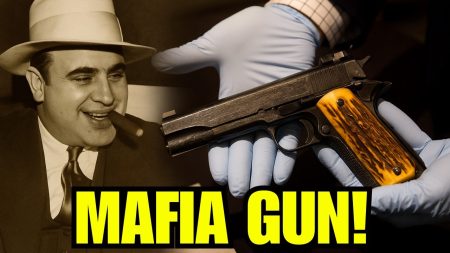Owned and operated by Jeff and Kristi Hoffman, Black Hills Ammunition has been in business for over 40 years. Jeff, a former police officer, handles the technical side of the business. Kristi, with a background in business and accounting, handles the necessary business operations such as human resources, bookkeeping, payroll and more.
The Black Hills Ammunition of today began as Black Hills Shooters Supply in 1981 in Rapid City, South Dakota, by a local police officer. As part of its business model, it produced police training ammunition. At the time, Jeff (and other officers) worked for the company part time. In 1982, Jeff and Kristi bought into the business as partners and, in 1988, the company became Black Hills under the exclusive ownership of Jeff and Kristi.
In 1996, Black Hills Ammunition placed (and won) its first bid to supply ammunition to the U.S. military. This helped cement the company’s reputation for making highly accurate and reliable ammunition. Since then, military contracts have been a large part of Black Hills’ business. U.S. Government specifications are very exacting, and Black Hills uses the knowledge gained from government contracts to produce high-quality ammunition for legally armed citizens and domestic law enforcement agencies.
The Process
Jeff shared that Black Hills operates an “assembly plant”; albeit a very precise one, but still an assembly plant. What this means is that they use bullets, brass, powder and primers from various manufacturers to produce the very best ammunition they can. Using components from different vendors allows Black Hills to make the very best loads for each caliber.
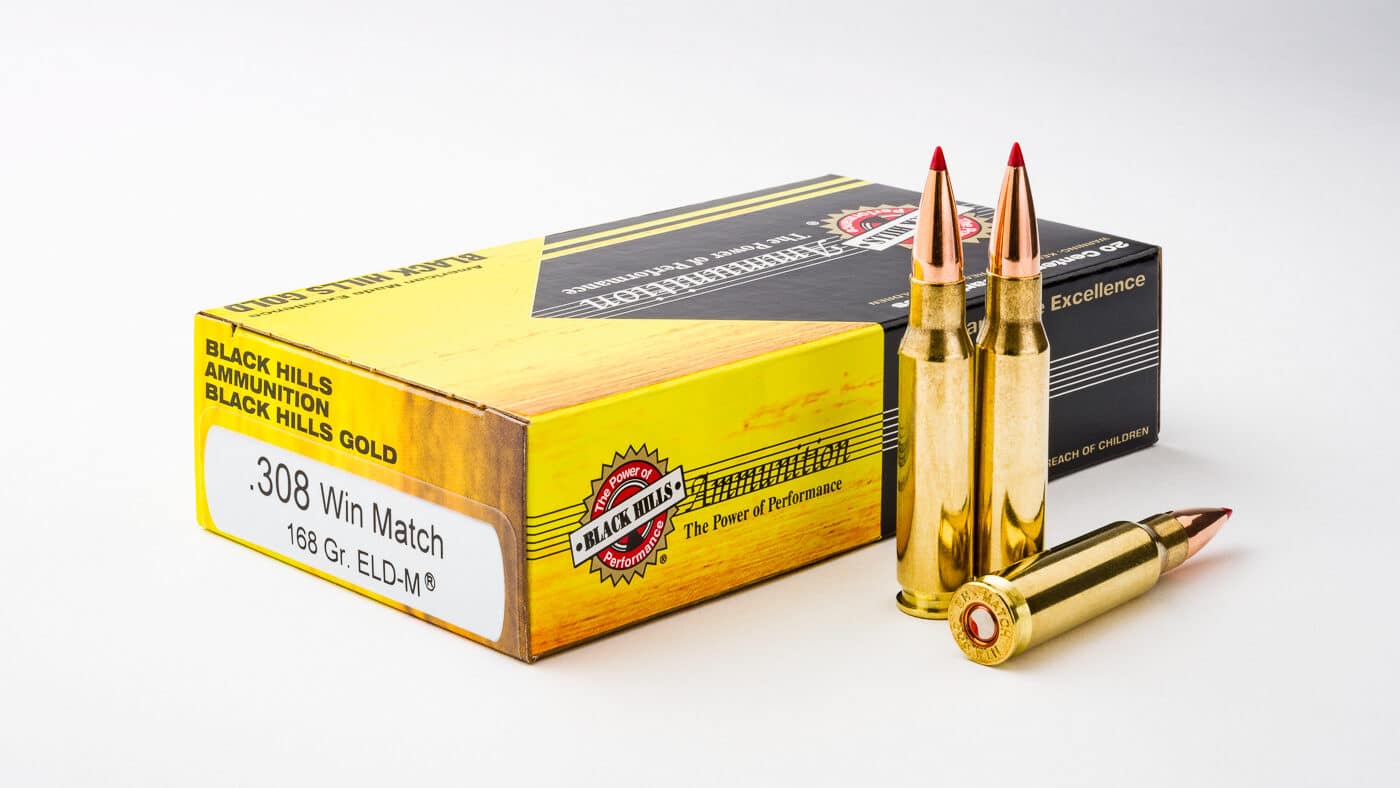
Commercial manufacturers, like handloaders, face supply chain problems. To work through these inevitable shortages, Black Hills has developed strong, multi-decade relationships with their suppliers. Additionally, the company keeps data from over 105,000 ammunition tests on file; this data allows them to change components as needed and keep producing quality ammunition.
Black Hills employs four full time lab technicians who test for accuracy, uniformity and standard deviation (SD). SD is a measure of how consistent a lot of ammunition is based upon the difference in velocity from the slowest to the fastest cartridge. The lowest possible SD is desirable for consistency and accuracy. The company will not produce a cartridge that does not adhere to its high standards and if a cartridge does not perform well, they will redesign it and try again.
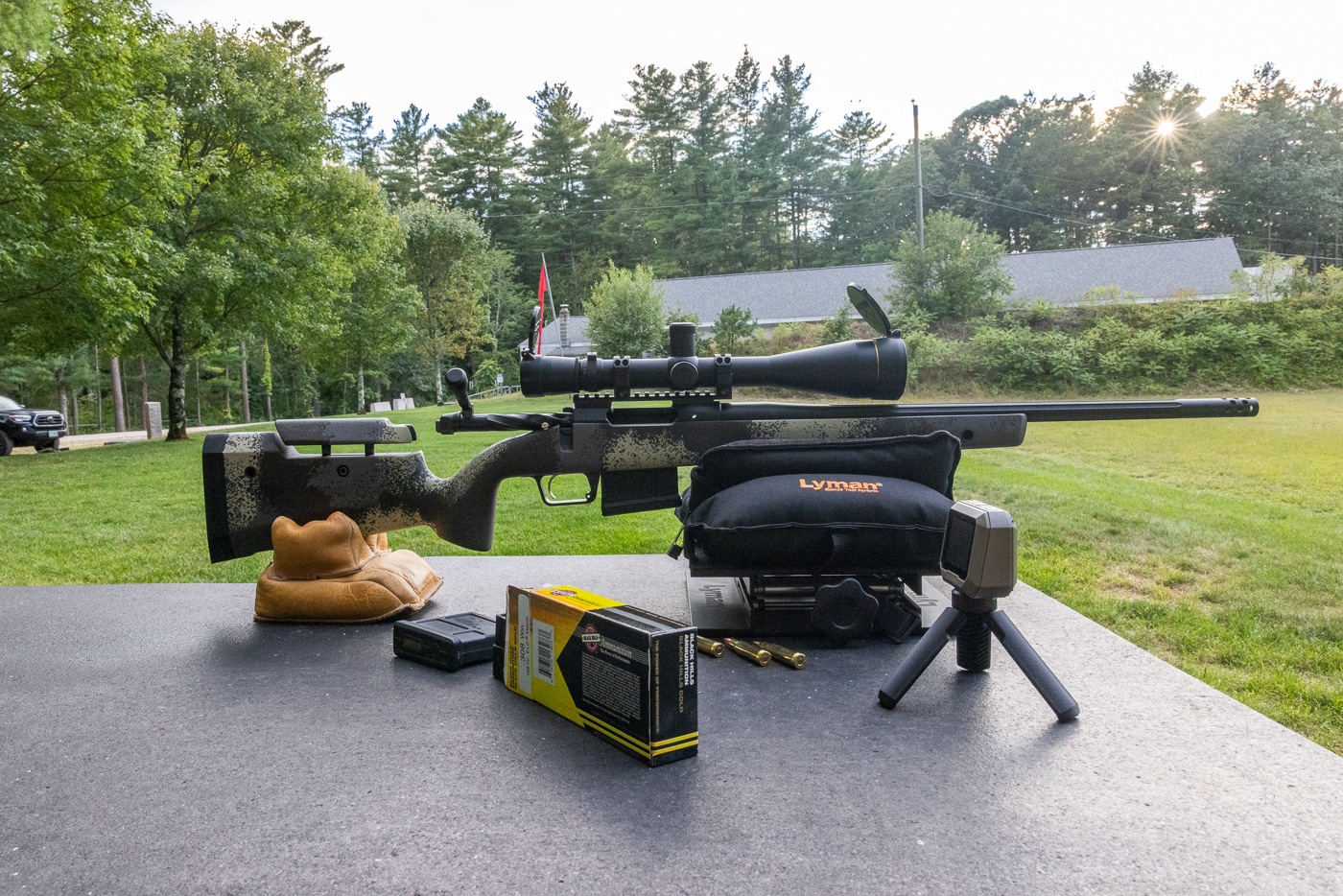
A product that Jeff is very proud of is the MK 262 MOD 1-C, MIL PACK. This is a precision 5.56 mm cartridge that was first produced at the request of the U.S. Navy in 1999. Jeff shared with me that for many of their 5.56 mm loads, the company uses a standard M41 primer. Handloaders (myself included) were under the (mistaken) impression that the M41 primer made the cartridge “to hot” and group size would suffer. Black Hills testing shows that their MK262 load will consistently shoot 2 inch groups at 300 yards or an incredible 0.64 MOA!
The Product
I was very interested in trying out some of their products for myself.
For this review, I decided to conduct accuracy and velocity testing with Black Hills Gold, .308 Winchester, loaded with a 168-gr. Hornady ELD Match bullet. I conduct ammunition testing on an outdoor range in New Hampshire. My goal is to shoot in a manner that replicates how a typical gun owner will use their ammunition. However, I try to avoid shooting on hot and humid days as well as rainy days because those conditions could make even the best ammunition perform poorly. Ballistic laboratories are interesting places that remove all variables. Laboratories do not mimic how people shoot in the field.
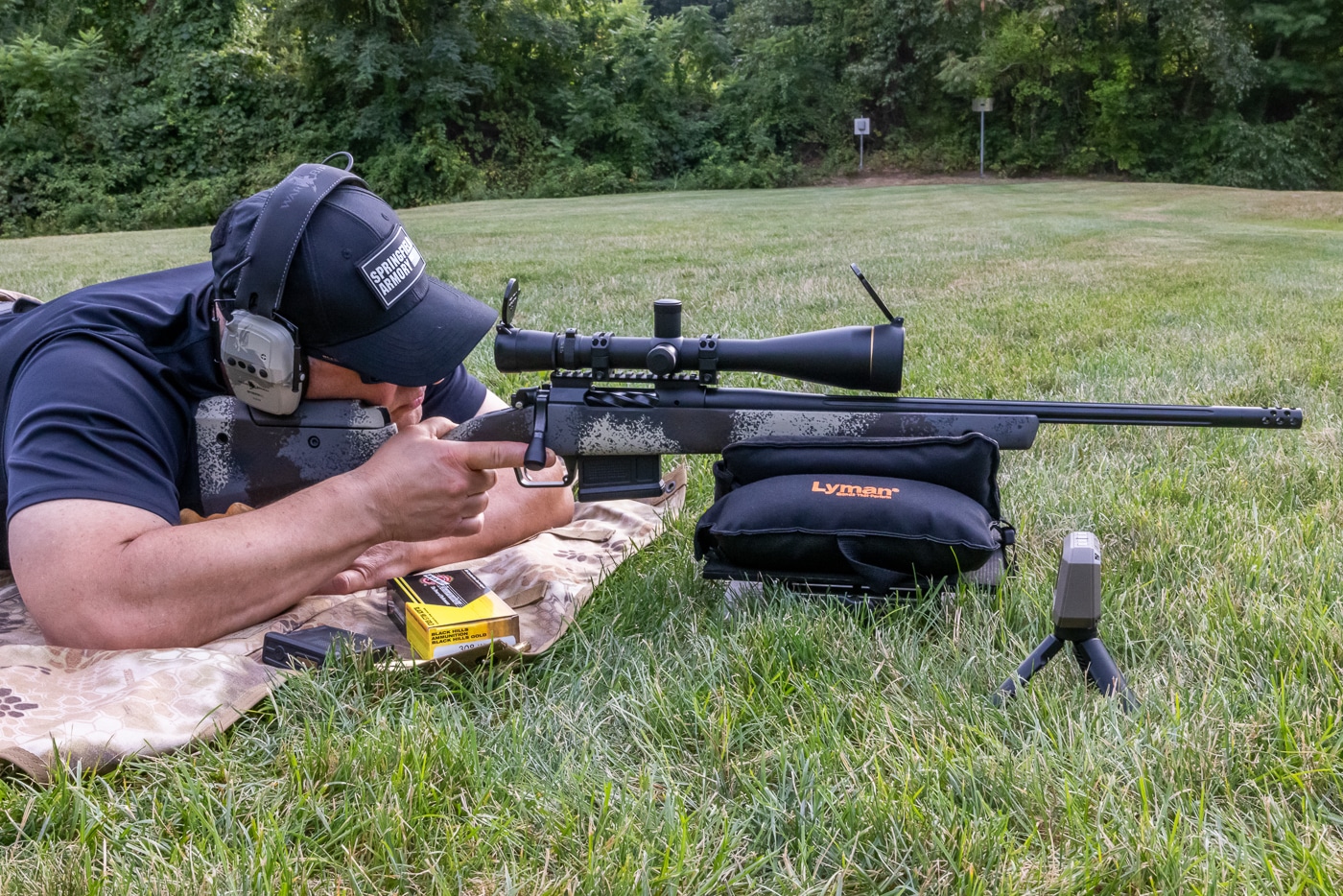
I shot the ammunition through a Springfield Model 2020 Waypoint Rifle on a late summer day when the humidity was low, and the temperature was about 75 degrees. Springfield guarantees Waypoints will shoot .75 MOA or better, which makes them a superb platform for testing ammunition. I topped the Waypoint off with a vintage Leupold 8.5-25x Vari X III. The ammunition was tested at 100 and 200 yards.
At 100 yards, I shot off a solid concrete bench and used a rear bag and supported the rifle’s forend with a Lyman Bag Jack Combo. These tools, as well as the high magnification scope, helped me to ensure that I used a consistent and repeatable point of aim. I put up an Action Target rifle sighting target and used the small diamond aimpoints in each corner.
A Garmin Xero was used to measure the muzzle velocity and calculate standard deviation. The average of the first ten shots was 2,580 feet per second (FPS) with a standard deviation of 7.9. This closely mirrors the advertised velocity of 2650 fps because the Waypoint has a 20” barrel, and Black Hills’ test barrel is 24”. At 100 yards, my best five-shot group was 0.95”, with the best three rounds coming in at 0.655”.
When I shot groups at 200 yards, I fired from the prone position. As is my usual practice, a Lyman Bag Jack Combo was used to support the rifle’s forend, and I used a rear bag to help support the buttstock. The prone and bench rest positions are the most stable and allow the shooter to use a repeatable point of aim for each shot. As I did at 100 yards, an Action Target Rifle Sighting Target was used. At 200 yards, the large diamond in the center was the aiming point.
At 200 yards, my best five-shot group was 1.90”, with the best three rounds measuring 1.29”.

My best 200-yard group size was slightly smaller (when MOA is calculated) than any of my 100 yard groups. I attribute this to the difference between shooting prone and seated at a bench. The Black Hills Gold and Waypoint Rifle did what they were designed to do.
During a recent conversation, Jeff told me that Black Hills, as a company, focuses on what they are good at: making precision ammunition that includes military specialty ammunition, law enforcement sniper ammunition and specialty ammunition such as authentic Cowboy Action Ammunition in 13 different calibers. After my range session, I can confirm that Black Hills Gold, .308 is truly precise. I am confident that the other calibers the company produces are just as good!
Editor’s Note: Be sure to check out The Armory Life Forum, where you can comment about our daily articles, as well as just talk guns and gear. Click the “Go To Forum Thread” link below to jump in!
Join the Discussion
Featured in this article
Read the full article here







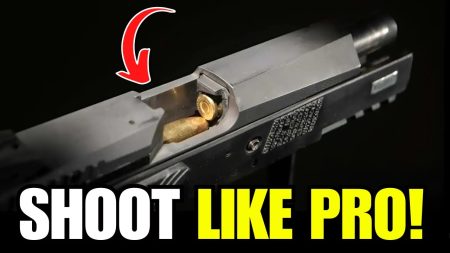
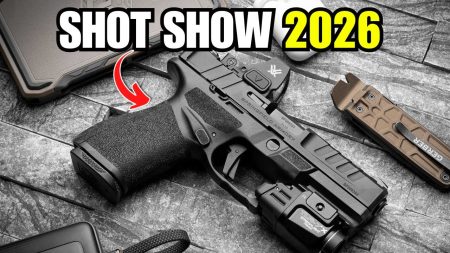


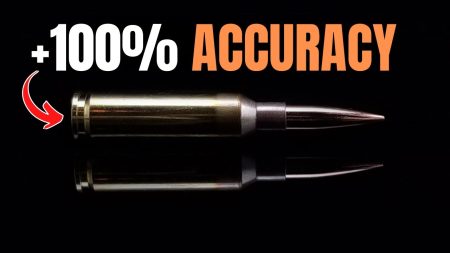
![Top 5 Precision Hunting Rifles That Are Actually Worth Your Money [2025] Top 5 Precision Hunting Rifles That Are Actually Worth Your Money [2025]](https://truthrepublican.com/wp-content/uploads/2025/12/1764928146_maxresdefault-450x253.jpg)

